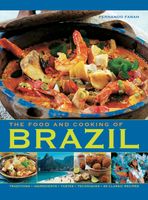Advertisement
The African influence
Appears in
Published 2011
Between 1570 and 1888, over 3 million African slaves were brought to Brazil, first to labour on the plantations, and later to work in the mines digging for gold and precious stones. African women were often employed as domestic helpers and therefore influenced the food being prepared in the kitchens of the big farmhouses. Coconut milk and dendê (palm oil) were used to flavour dishes, and a variety of different peppers added heat and spice to blander Portuguese recipes. Adding a grain to sauces to make thicker pastes is another African invention, and in Brazil, cassava flour substituted the grains and yams the slaves had used. Tutu (black bean and cassava flour purée), pirão (fish stock and cassava flour purée) and Bobó de Camarão (prawns in cassava purée and coconut milk sauce) are typical examples of this new form of multicultural cooking.


